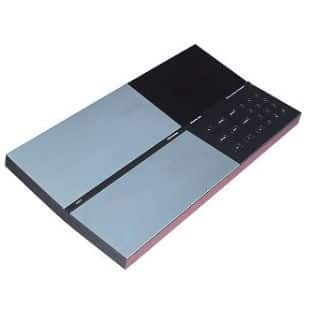
BeoCord 6000
Beocord 6000 measured 53cm wide x 13cm high (24,5cm with lid open) x 30cm deep. The slim cabinet was finished in a choice of natural teak or rosewood. With improving specifications of cassette recorders, tape manufacturers also made progress in the formulation of tape. Standards committees decided to classify tapes into three main categories: oxide […]
Overview
Beocord 6000 measured 53cm wide x 13cm high (24,5cm with lid open) x 30cm deep. The slim cabinet was finished in a choice of natural teak or rosewood.
With improving specifications of cassette recorders, tape manufacturers also made progress in the formulation of tape. Standards committees decided to classify tapes into three main categories: oxide tape, chrome tape and metal tape. The newer categories allowed improved recording performance, but also required different recording bias levels to achieve the improvements.
Manufacturers of cassette recorders incorporated switches to adapt the recording characteristics to the tape, and later a system of slots at the back of the cassette were standardised, so that the recorder was set to the correct type of tape during recording. It should be added that once recorded, replay conditions were identical for all tape types, so that once the cassettes were recorded, they could be replayed on any machine.
Beocord 6000 closely resembled the top of the range Beocord 8000 but had black keys to match those on the Beomaster 6000. The Beocord 8000 was replaced at the time of the introduction of the 6000 by the 8002 which offered Dolby HX Pro in addition to its other features.
Product Details
Software
No software information available.
Product Specification
Compact cassette: C46-C60-C90-C120
Tape head: Sendust
Noise reduction: Dolby B
Tape switch Auto. ferro/chrome/manual metal
Wow and flutter DIN: < +/- 0.1%
Speed deviation: 68 dB
Signal-to-noise ratio chrome Dolby NR: > 66 dB
Signal-to-noise ratio ferro Dolby NR: > 64 dB
Power supply:
4831 114V
4832 120V
4833 127V
4834 220V
4835 240V
4836 240V
4837 105V
Power consumption: max. 50 W
Dimensions: W x H x D 53 x 13 x 50cm (24,5cm high with lid open)
Weight: 7.5 kg
Connections: AUX IN 100mV/1.2 mohms
Microphone: 0,1mV/3 kohms
Headphone: max 5V/89 ohms
Downloads
Type | Language | Type | |
User Guide | EN | BeoCord 6000 User Guide | |
Service Manual | EN | BeoCord 6000 Service Manual |
Photo Gallery
No gallery images.
Frequently Asked Questions
No FAQs available.






